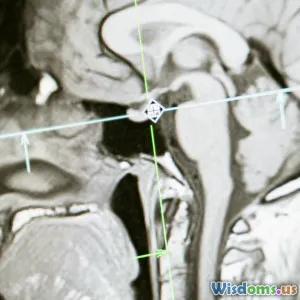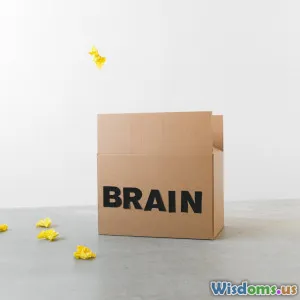
Dream Interpretation and Brain Function
9 min read Explore how dream interpretation intertwines with brain function to unlock the mysteries of our nighttime visions. (0 Reviews)
Dream Interpretation and Brain Function: Unlocking the Mysteries of Our Nighttime Mind
Dreams have fascinated humans since ancient times. Throughout history, cultures have regarded dreams as messages from the gods, reflections of inner desires, or a glimpse into alternate realities. Yet, it is only in recent decades that science has begun to unravel the biological and neurological processes that underlie dreaming and how we interpret those nocturnal narratives.
Understanding dream interpretation through the lens of brain function offers a unique glimpse into the human mind — merging psychology, neuroscience, and cognitive science. This article delves into how brain activity shapes the content and experience of dreams, explores why dreams hold personal significance, and examines what this means for interpreting and using dreams in waking life.
The Brain’s Dream Factory: How Dreams Are Generated
Dreams primarily occur during the rapid eye movement (REM) stage of sleep, a phase characterized by heightened brain activity. Contrary to the once-popular belief that the brain “shuts down” during sleep, research reveals it is highly active, especially in areas related to vision, emotion, and memory.
Neurobiology of Dreaming
The dream state involves complex interactions between several brain regions:
- The Limbic System: Including structures like the amygdala and hippocampus, it processes emotions and memories, often explaining the vivid emotional content in dreams.
- The Prefrontal Cortex: Associated with reasoning and executive function, it’s less active during REM sleep, which may account for dreams’ illogical, surreal qualities.
- The Visual Cortex: Reactivates sensory imagery even without external sight stimuli, generating the vivid scenes we “see” in dreams.
This unique pattern of brain activation produces a mental environment where free association and emotional processing intermingle, often resulting in the cryptic narratives common in dreams.
Why Do We Interpret Dreams? A Cognitive and Cultural Perspective
Humans have long sought meaning in dreams. Interpreting dreams helps us make sense of emotional experiences and unconscious thoughts, which may otherwise remain inaccessible.
Psychologist Sigmund Freud famously proposed that dreams are a “royal road to the unconscious,” expressing hidden wishes or conflicts. Meanwhile, Carl Jung viewed dreams as messages from the collective unconscious, rich with archetypal symbolism.
Contemporary cognitive neuroscience offers insights explaining why dream interpretation resonates across cultures and epochs:
- Dreams reflect working memory and emotional regulation processes, helping us integrate waking experiences.
- The brain attempts to create coherent narratives by binding fragmented mental fragments into stories.
- This narrative construction is a cognitive mechanism that also underlies how we comprehend reality.
By interpreting dreams, individuals engage in self-reflection and emotional problem-solving, effectively giving their brain’s nocturnal activity meaning and purpose.
Scientific Techniques in Dream Research
Advances in brain imaging and sleep monitoring have revolutionized how researchers study dreams.
Functional Magnetic Resonance Imaging (fMRI)
fMRI allows scientists to observe brain activity during sleep. Studies have shown increased activation of the emotion and memory centers during REM sleep, correlating with heightened imagery and emotional intensity in dreams.
Electroencephalography (EEG)
EEG detects electrical brainwaves and differentiates between sleep stages. This helps confirm when dreaming is most likely (REM phase) and measures changes in brain rhythms that may predict dream content.
Dream Report Analysis
Combining neuroimaging with verbal dream descriptions yields rich datasets linking brain states with subjective dream experiences. For instance, one study found that increased activation in the amygdala corresponded to dream reports involving fear or anxiety.
These scientific methods not only validate the subjective richness of dreams but also enable quantifiable correlations between brain function and dream interpretation.
The Role of Memory and Emotion in Dream Content
Our dreams often interweave fragments of memories, emotions, and recent experiences. This interplay is fundamental to dream interpretation.
Memory Consolidation
During sleep, the brain consolidates and reorganizes memories. Dreams may reflect this process, creating symbolic or abstracted replays of daytime events.
Emotional Processing
Dreaming appears to help regulate emotions, offering a safe ‘rehearsal’ space for confronting fears or unresolved feelings. For example, veterans with PTSD often report distressing nightmares related to trauma, highlighting the emotional salience of dreams.
Understanding that dreams reflect emotional and memory processing functions allows interpretations to shift from mystical to psychological frameworks, granting practical value.
Applying Brain Science to Dream Interpretation
So what practical insight can neuroscience bring to the art of interpreting dreams?
Recognizing Emotional Components
Knowing that areas like the amygdala are active during dreams suggests why emotions feel intensified and sometimes surreal. Interpreters should consider the dreamer’s emotional state as a key to decoding symbolism.
Appreciating Symbolism’s Subjectivity
Since dreams arise from personal memories and associations, universal symbols are rare. Instead, understanding an individual’s context and experiences alongside brain activity patterns offers a more accurate interpretation.
Using Dreams for Mental Health
Therapists increasingly use dream analysis in psychotherapy, acknowledging the brain’s role in emotional self-healing during sleep. Dreams can reveal unconscious conflicts and promote insight.
For example, a study published in the Journal of Affective Disorders (2019) found that patients with depression who engaged in guided dream interpretation showed improved emotional regulation.
Real-World Insights: Dreams Across Cultures and Professions
Dreams have been central to creativity and problem-solving. Famous figures like Albert Einstein and Salvador Dalí harnessed dreams to inspire inventions and art.
In many indigenous cultures, dreams guide important decisions and healing rituals — rooted in the understanding that brain function during sleep reveals truths not accessible during waking hours.
Modern entrepreneurs and scientists use lucid dreaming (a state where the dreamer is aware during the dream) to enhance creativity, demonstrating the brain’s capacity to bridge dreams and reality deliberately.
Conclusion: Merging Science and Interpretation for Deeper Understanding
Dreams occupy a fascinating realm where science and mysticism intersect. While ancient traditions focused on symbolic and spiritual meanings, modern brain science provides concrete explanations for how dreams form and why they resonate emotionally.
Interpreting dreams through the lens of brain function enriches our understanding of the human psyche—illuminating how memory, emotion, and creativity converge in our overnight mindscapes.
Ultimately, dreams are not just fleeting images but mental exercises shaped by our brain’s intricate architecture. Recognizing this helps us not only unlock hidden insights within dreams but also appreciate the powerful biological dance our brain performs each night.
By embracing both scientific knowledge and personal meaning, dream interpretation becomes a powerful tool for growth, healing, and self-discovery.
References:
- Nir, Y., & Tononi, G. (2010). Dreaming and the brain: from phenomenology to neurophysiology. Trends in Cognitive Sciences, 14(2), 88-100.
- Stickgold, R., & Walker, M. P. (2013). Sleep-dependent memory triage: evolving generalization through selective processing. Nature Neuroscience, 16(2), 139-145.
- Barrett, D. (2001). Trauma and dreams. Dreaming, 11(4), 213.
- Schwartz, S., & Maquet, P. (2002). Neuroscience of sleep dreaming. Nature Reviews Neuroscience, 3(11), 653-666.
Rate the Post
User Reviews
Popular Posts



















